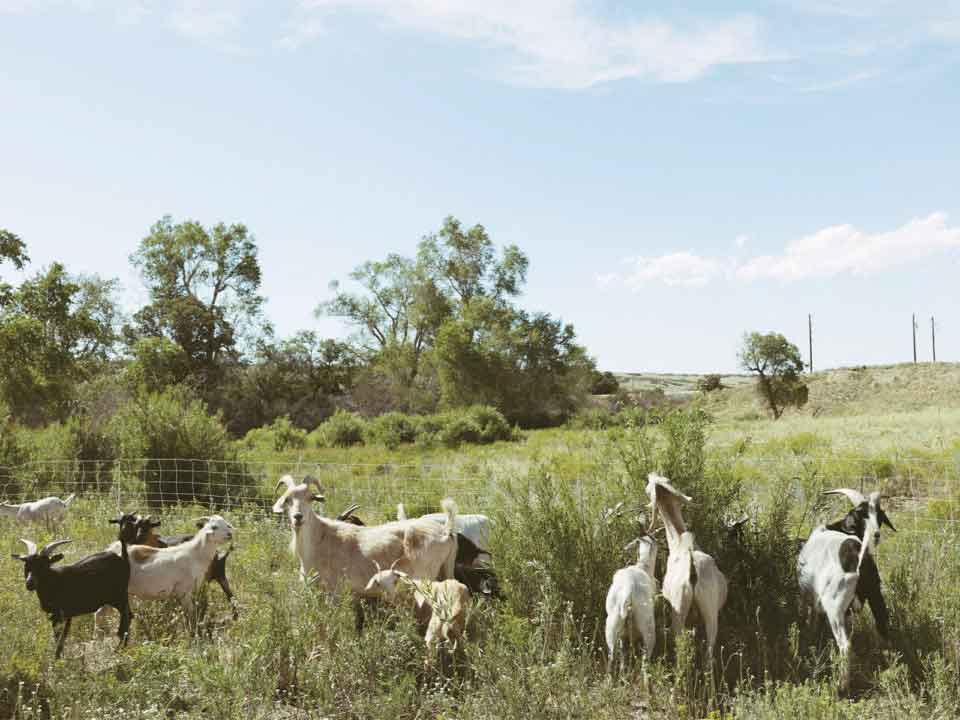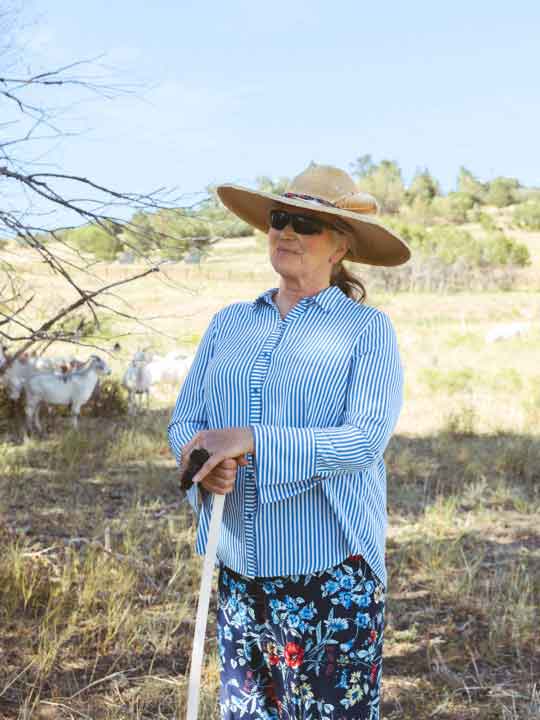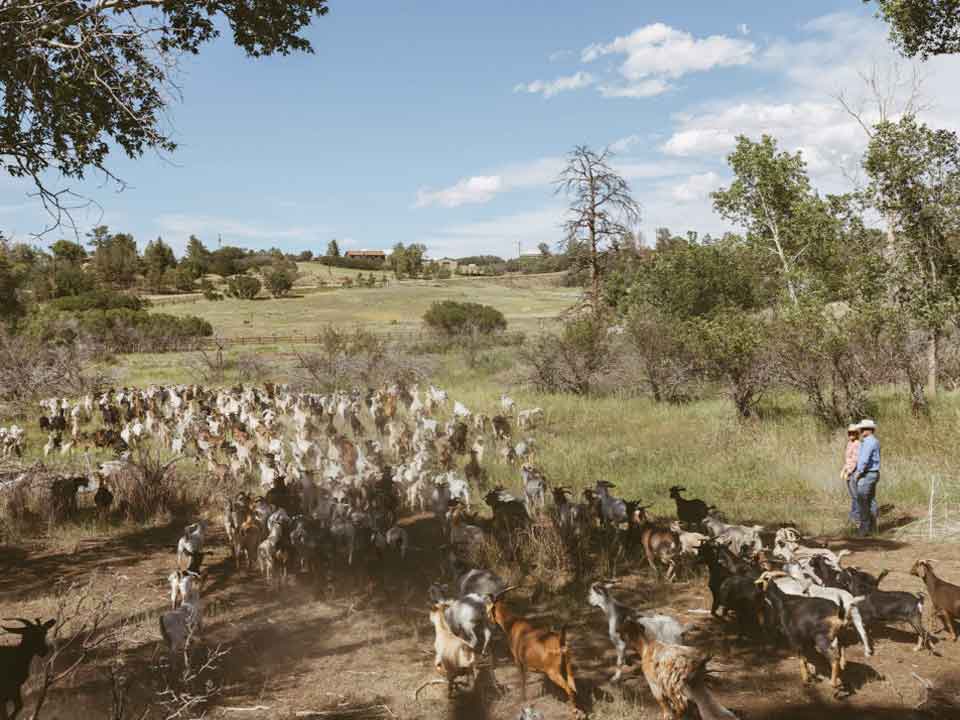
They’ve got 6,000 legs, 3,000 horns, and an appetite for fire mitigation.
Be it scrubby, brushy, leafy, prickly, or even poisonous, chances are Lani Malmberg’s goats will eat it. Guided by her border collies and portable electric fencing, Malmberg’s 1,500-strong herd roams the West munching through overgrown brush up to eight feet high (while standing on their hind legs), filling their bellies while protecting Colorado and other states from wildfires.
Firefighters call the vegetation on the goats’ menu a fuel ladder, a flammable link that allows ground fires to easily leap into the tree canopy above. Eliminate the rungs, and you slow a blaze’s growth. Malmberg’s herd also “eats the problem and recycles it,” she says—i.e., as they browse, they poop. That boosts organic matter in the soil, increasing the land’s ability to hold water and reducing erosion. Plus, the mass of goats moving across inclines smooths steep drop-offs, thereby preventing or mitigating the severity of mudslides if a fire does come through the area. In other words, goats are a triple threat for anyone looking to tamp down the intensity of wildfires in an era of climate-change-fueled drought.

Malmberg, 64, got into the business after graduating from Colorado State University in 1996 with a master’s in weed science (no, not that kind). “I’d never seen a goat in my life,” she says. But in pursuit of an alternative to chemicals for her weed-mitigation business—and because she wanted to work outside with her children—Malmberg started what’s now called Goat Green the same year she received her diploma. As wildfires increased in number and size across the West, however, Malmberg’s clients became more concerned about blazes than weeds. Today, nearly 100 percent of Goat Green’s business is fire mitigation.
Malmberg and her son Donny Benz, 38, run the herd from a home base in Wellington—not that they’re there much. Governments, land managers, and homeowners hire Goat Green, which moves the herd via hired-out semis with four-deck livestock carriers. “We live in campers right with the goats, wherever we are,” Malmberg says. They work year-round and have done jobs in 17 states, from HOAs in Elizabeth to open space in Westminster and Broomfield to a movie star’s estate near Jackson, Wyoming (she declines to name which one). For the past two years, the Bureau of Land Management (BLM) has contracted the herd to clear brush from the slopes of Glenwood Canyon. “Lani’s goats can get into topography that machinery cannot,” says Kristy Wallner, a Silt-based rangeland management specialist with the BLM. “You’re reducing the amount of herbicides in the soil. Goats consume about a quarter of the water that cattle do and graze in different areas. We need more people to start using them to manage vegetation on public lands.”

Goat Green is working on that. In 2020, Malmberg and Benz founded the nonprofit Goatapelli Foundation to train the next generation of goat graziers. Trainees first complete an online course, and then work with Goat Green for 30 days. After that, students either apprentice with Malmberg or complete 10 on-the-ground work sessions with another member of the team over two years before finally receiving Goatapelli’s certification. Not only do novices learn skills, but they also have ample opportunity to decide if a career that might involve enduring minus-30-degree temperatures, wrestling an antelope stuck in an electric fence, and dealing with lowlifes who throw fireworks at goats—to name just a few challenges Malmberg and Benz have handled—is really for them.
More goat outfits have cropped up in recent years, some of them owned by Malmberg’s protégés, but none approaches Goat Green’s size yet. “There needs to be 1,000 of us with 1,000 head each working in Colorado right now,” Malmberg says. With wildfire threatening homes and ecosystems in an increasingly warming world, Malmberg believes that preventing, rather than simply fighting, fires will save money and lives. The key to making that switch may well be more hooves on the ground.
Article Originally Published in 5280 • Elisabeth Kwak-Hefferan • August 2022
